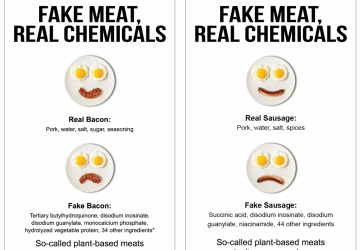Last April when Centers for Disease Control and Prevention (CDC) researchers released a study putting the number of overweight- and obesity-related deaths at 26,000 — one-fifteenth the agency’s original estimate of 400,000 — some critics questioned the science. A few even hatched outlandish conspiracy theories that the study’s author, CDC researcher Dr. Katherine Flegal, was secretly working for special interest groups. But an increasing number of prestigious scientists are openly questioning the orthodoxy on obesity.
This week’s edition of the frequently alarmist New Scientist — which in the past has written about the supposedly addictive quality of food and the dire risk of mad cow disease — reports that “the widely repeated claim that this epidemic of flab is endangering the lives of millions of people is now mired in controversy … Is it time to rewrite the rule book on what constitutes a healthy weight?”
You bet it’s time. Remember to check out our forthcoming book — An Epidemic of Obesity Myths — which details how the risk of obesity has been hyped again and again.
New Scientist quotes Flegal saying: “Although people think there’s all this evidence out there showing a high mortality risk associated with overweight, in fact the literature doesn’t show it.” The article adds that a recent meta-study (a study of other studies) “pooled data from 26 separate studies and found that even after controlling for smoking, being overweight was linked to a small drop in the risk of death compared with normal weight.”
The link between obesity and mortality isn’t the only myth debunked by New Scientist. It also took on the Body Mass Index (BMI), which separates us into normal and officially fat categories. The BMI was the topic of a health report in yesterday’s Chicago Sun-Times:
Seven years ago, 35 million Americans became overweight literally overnight. America suddenly became fatter when the federal government changed the definition of overweight, based on a calculation called body mass index. BMI is the key number used in studies finding that two-thirds of American adults are overweight, 31 percent are obese, about 30 pounds or more overweight, and 5 percent are extremely obese, about 100 pounds or more overweight. The index has come under criticism in recent years for exaggerating the obesity epidemic and giving a poor estimate of body fat for some individuals.
Despite the increasing number of skeptical scientists, some continue to carry the torch of obesity hysteria. Xavier Pi-Sunyer, who was responsible for redefining those 35 million Americans, defended his decision by saying if critics were correct, “these numbers would not have held up for the past seven years.”
But the science hasn’t added up. As Flegal’s study and many others demonstrate, only the severely obese — a small percentage of the population — suffer from many of the health complications Pi-Sunyer and others try to pin on 65 percent of the country. It turns out Pi-Sunyer has received substantial funding from the weight loss industry, which has a huge financial stake in scaring as many Americans as possible about being overweight.




